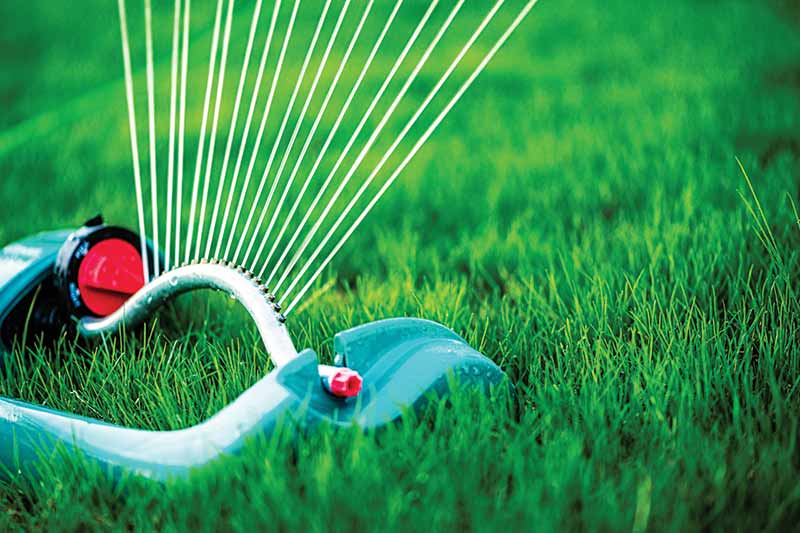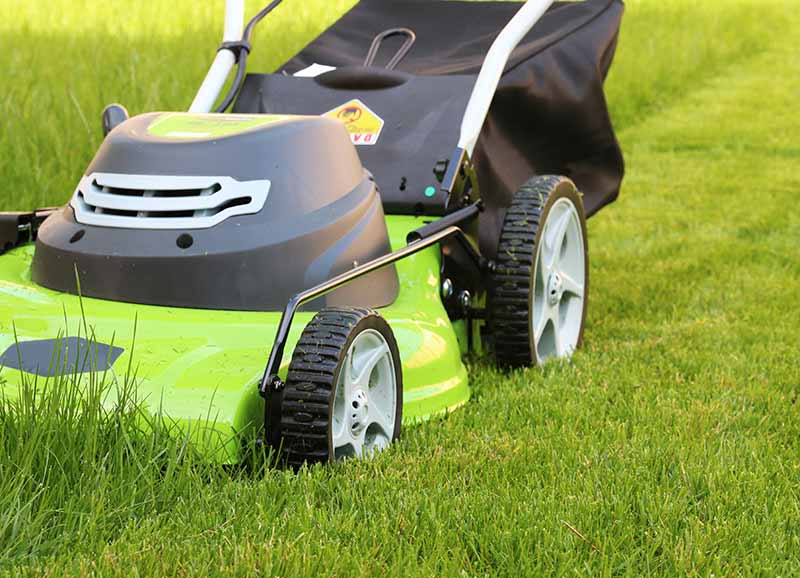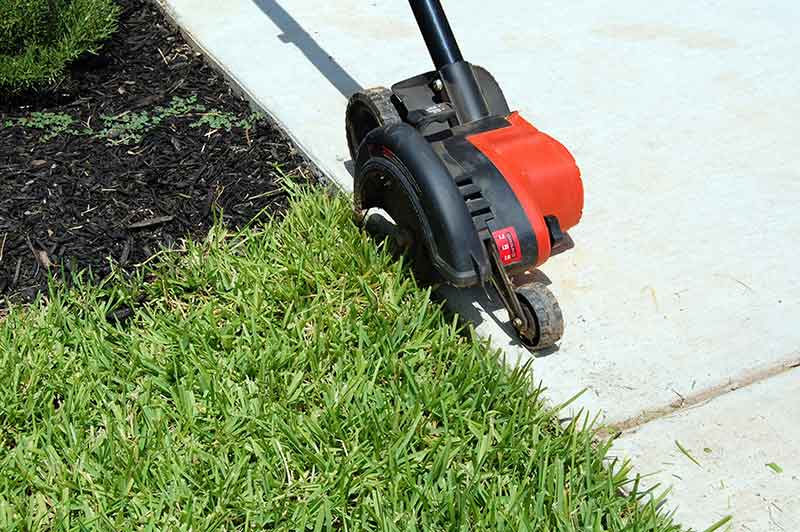Easy Lawn Maintenance Schedule
You want the lush lawn, the vibrant spread of green, the clean edges and the velvety cushion of healthy grass beneath your feet. You also want your weekends — long days that include a hammock and a cold drink, not a rake and a weed-whacker. But one question haunts you: Is it possible to have both?
The answer is yes. All you have to do is divide and conquer lawn work, doing a little bit each weekday.
Here are the six essential lawn maintenance tasks:
Each task has a time estimate and an effort rating on a scale of 1 (simple, a child could do it) to 4 (experience recommended). Then you can use one of the strategies explained below to create a routine that allows you to enjoy both your weekends and your beautiful yard.
1. Fertilizing
After seeding, fertilizing is the most important thing you can do to achieve a lush lawn. Fertilize once or twice in early spring and once again in the fall. Divide your yard into sections, and then fertilize one section each week until you've fertilized the whole yard. During summer, add Ironite Mineral Supplement 1-0-0 if grass color becomes faded or yellow.
Time Estimate: Approximately 30 minutes per section, depending on lawn size.
Effort Rating: 3—A little effort goes a long way.
2. Watering
Most lawns need about one inch of water every week. Watering needs will vary, of course, depending on the weather. As a general rule, it's better to water less frequently (weekly instead of daily) and more deeply to promote a healthy root system.1 Determine how long to water by purchasing an irrigation system with a built-in sensor or by conducting a simple can test.*
Time Requirement: A few minutes to program the sprinkler system; one to two hours total watering time, depending on sprinkler type and lawn size.2
Effort Rating: 1—Simple, a child could do it.

3. Mowing
The key to a good cut is to follow the one-third rule3: Don't take off more than one-third of the grass blade, and keep grass height at the recommended level for your grass type. Mowing frequency varies with the season. Generally, a weekly cut is adequate to keep your lawn neat during the summer and fall seasons.4 In the spring, you might need to mow biweekly.3
Time Requirement: One hour, depending on lawn size.
Effort Rating: 3—A little effort goes a long way.

4. Edging
Mowing without edging is like combing your hair but forgetting to shave. Straggly grass edges make even the healthiest lawn appear unkempt. Invest in a good edge trimmer, and use it weekly to put the perfect finishing touch on your hard work.
Time Estimate: Thirty minutes to one hour, depending on lawn size.
Effort Rating: 3—A little effort goes a long way.
5. Controlling Weeds
Properly watered and fertilized grass, and regular maintenance, will eliminate most weed problems; early prevention will do the rest.5 An initial application of herbicide in early spring, and spot treatments as needed through the summer, will keep your lawn weed-free. To save time, use Pennington Full Season Weed & Feed with Crabgrass Control 25-0-8, which combats weeds as it feeds your grass all season.
Time Requirement: Thirty minutes to one hour, depending on lawn size.
Effort Rating: 3—A little effort goes a long way (initial application); 2—Easy does it (spot treatment).
6. Repairing Damage
Lawn damage occurs for many reasons: heavy traffic, kids at play, fire ant mounds, fungus or disease. Repair bare spots, diseased areas and holes by applying Pennington Smart Patch II, which combines seed, fertilizer and mulch in one effective solution. Make damage repair a regular part of your routine and it won't become overwhelming.
Time Requirement:One hour, depending on lawn size.
Effort Rating: 2—Easy does it.

Strategies To Help You Create Your Routine:
The "Free Weekend" Strategy
Complete your lawn maintenance before the weekend by combining tasks on weekdays. If you travel often, need flexibility, or if your weekends are generally packed with activities, this strategy is for you.
A Sample "Free Weekend" Routine
- Monday: Mow and water
- Wednesday: Trim and weed
- Friday: Repair damage and fertilize
- Weekend: Relax!
How to Use This Strategy
Pair one time-consuming task with one quicker task, or pair one high-effort task with one low-effort task. Assign pairs of tasks to specific days of the week. During spring, mow twice a week.
The "Time Saver" Strategy
Complete one task each weekday, leaving you only one task for the weekend. If you don't have large blocks of free time, this routine will work best for you.
A Sample "Time Saver" Routine
- Day 1: Fertilize
- Day 2: Mow
- Day 3: Weed control
- Day 4: Trim
- Day 5: Repair damage
- Weekend: Water, and then relax!
How to Use This Strategy
Complete one task each weekday; pin the time consuming and high-effort tasks to days when you have the most time and flexibility. During spring, plan to mow again on Day 5, before you repair damage.
Now that you have lawn maintenance down to a manageable science, you can relax and enjoy your weekends. And if you happen to see your neighbors sweating away Saturday and Sunday afternoons in their yards, don't rub it in ... too much.
*Conduct a can test by placing small cans on the lawn (tuna or cat food cans are great because they're only an inch high), and then running your sprinkler for 15 minutes. When time is up, measure the water in the cans. This will help you determine how long you need to run your sprinklers to give your lawn one inch of water per week.
Pennington 1 Step Complete is a registered trademark of Pennington Seed, Inc.
Sources:
- Agriculture and Natural Resources, University of California, The UC Guide to Healthy Lawns: How to Water, July 10, 2014.
- Kansas State University Research and Extension, How Long Do I Run My Sprinkler?, July 2011.
- Cornell University, Lawn Care Library: Mowing, 2006.
- Richard Jauron and Willy Klein, Yard and Garden: Lawn Mowing, May 29, 2013.
- Stephen Hart, Darren Lycan, and John Meade, Weed Control in Home Lawns, August 2003.


